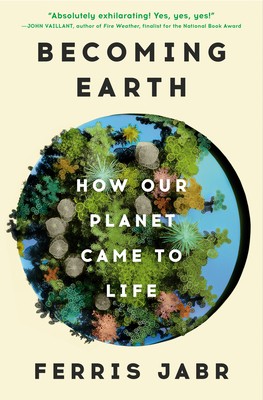
- We will send in 10–14 business days.
- Author: Ferris Jabr
- Publisher: Random House
- ISBN-10: 0593133978
- ISBN-13: 9780593133972
- Format: 15.5 x 23.4 x 3.3 cm, kieti viršeliai
- Language: English
- SAVE -10% with code: EXTRA
Reviews
Description
A major paradigm shift in the way we see the Earth; it is a gorgeous living organism, and all its inhabitants have a role in shaping its future. The notion of a living world is one of humanity's oldest beliefs. Though scorned by scientists in the sixties and seventies, the facts supporting this concept have now become tenets of modern Earth system science, a relatively young field that studies the living and nonliving components of the planet as an integrated whole. Life did not evolve passively in response to its environment, as scientists have long assumed. Instead, it evolved with Earth, shaping its climate and terrain at every scale, one part in a great orchestra, in which non-living elements--the air, rocks, and water--are the instruments that life, in its multitudes, has emerged to play. Jabr transports the reader to some of the world's most extraordinary places--an underwater kelp forest on the coast of California, a vertiginous tower above the Amazon rainforest, and a former gold mine two miles below the Earth's surface--to explain how these symbiotic relationships evolved. He shows us how plants and other photosynthetic organisms help maintain the right level of atmospheric oxygen to support complex life. We see how microorganisms participate in many geological processes, producing new minerals and converting rock from one state to another; some scientists think they played a crucial role in forming the continents. In these pages we learn that large mammals maintain grasslands and prevent permafrost from melting; coral reefs and shellfish store huge amounts of carbon, buffer ocean acidity, improve water quality, and defend shorelines from severe weather; and so much more. Humans are in a unique position to understand life's intricate collaborations. Jabr introduces us to the people protecting and restoring life's planet-stabilizing processes and protecting ancient ecological harmonies, and he opens our eyes to life's imprint on every part of the planet today, from the heart of the Amazon rainforest to the soil in our backyards.EXTRA 10 % discount with code: EXTRA
The promotion ends in 23d.17:04:07
The discount code is valid when purchasing from 10 €. Discounts do not stack.
- Author: Ferris Jabr
- Publisher: Random House
- ISBN-10: 0593133978
- ISBN-13: 9780593133972
- Format: 15.5 x 23.4 x 3.3 cm, kieti viršeliai
- Language: English English


Reviews